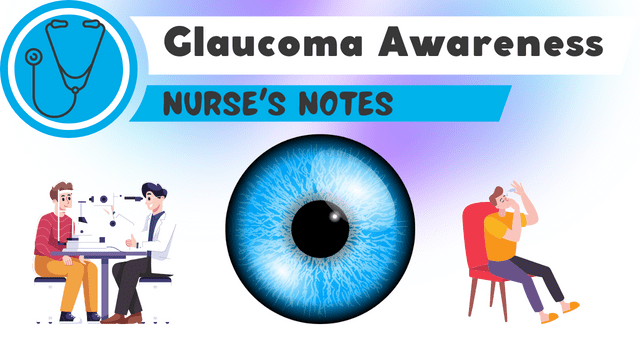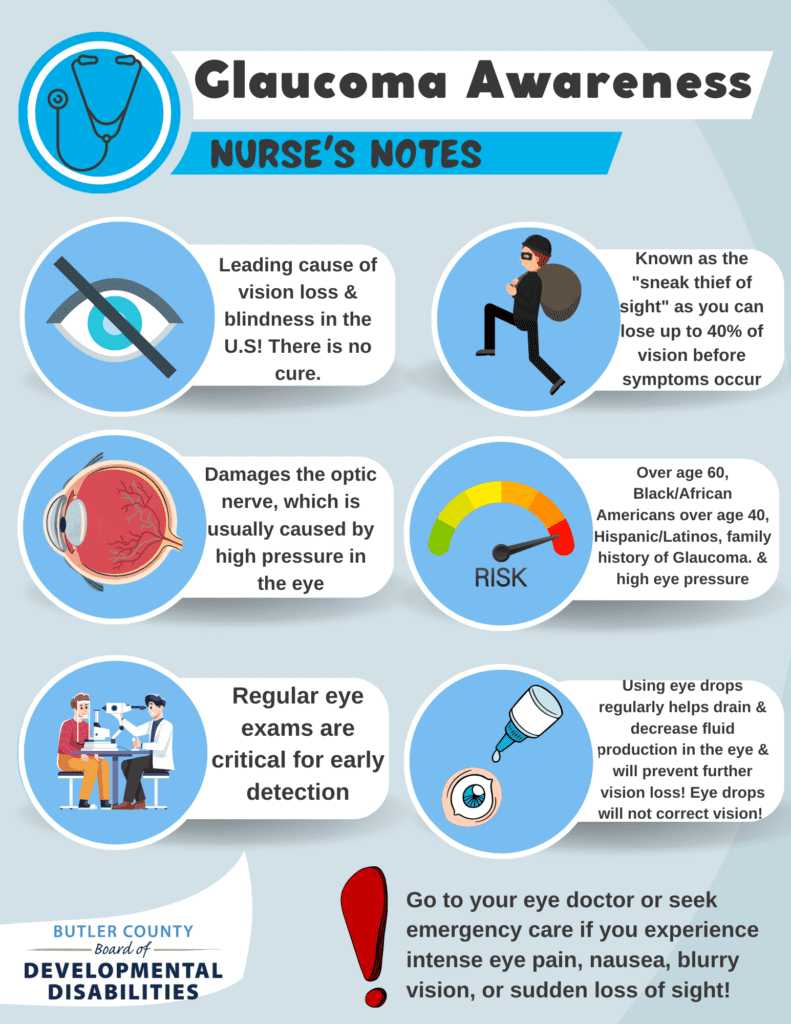
Nurse’s Notes: Glaucoma Awareness
Every month, our staff nurses share important health updates. This month, our nurses are talking about Glaucoma!
Glaucoma is a leading cause of vision loss and blindness in the United States, which is why it is critical to know what symptoms to look for in order to prevent permanent vision damage.
What is Glaucoma?
Glaucoma is a disease that damages your eye’s optic nerve. It usually happens when fluid builds up in the front part of the eye. That extra fluid increases the pressure in the eye, damaging the optic nerve. Glaucoma is often referred to as “the sneak thief of sight,” because there are often no symptoms until as much as 40% of vision is lost. Regular, comprehensive eye exams are critical for early detection and to prevent further vision loss.
Who can get Glaucoma?
Anyone can get glaucoma, but some people are at higher risk, including people who:
- Are over age 60
- Are Black/African American and over age 40
- Are Hispanic/Latino
- Have a family history of glaucoma (makes a person 3 times more likely to get it)
- High eye pressure
What are the symptoms of Glaucoma?
- Intense eye pain that may be mistaken as migraine headaches
- Upset stomach (nausea) accompanying severe eye pain
- Blurry vision
- Sudden sight loss
How is Glaucoma treated?
There’s no cure for Glaucoma, but early treatment can often stop it from damaging a person’s vision. Glaucoma is often treated with eye drops that either help drain fluid from the eye or decrease the amount of fluid produced. Treatment can also include surgery or laser treatments. Glaucoma eye drops won’t make you feel different or improve your vision. They prevent your vision from getting worse. If you don’t use them as prescribed, you could lose your vision.

Glaucoma Resources
To experience what it’s like to live with vision loss from common eye diseases, including Glaucoma, download the NEI VR: See What I See app on your smartphone from the Apple app store or Google Play.
